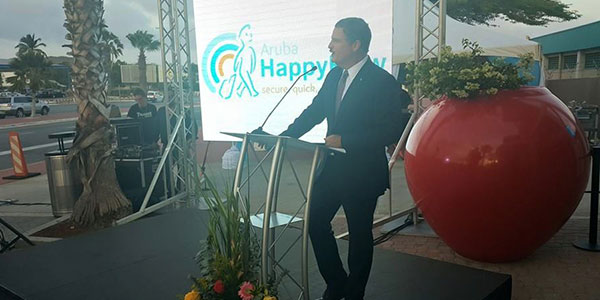
The first of its kind Aruba Happy Flow project, in which biometrics are used as the key identifier at all airport checkpoints, was launched at Aruba Airport on Thursday 28 May. The pilot project, which will run for the next two years, will see facial recognition technology used to identify passengers at check-in, bag drop, border control and aircraft boarding. Once the passenger’s passport and facial image have been linked at the initial check-in stage, they will not have to show their passport or boarding pass again before boarding the aircraft.
The project is the result of collaboration between Aruba, the Netherlands, Aruba Airport Authority, Schiphol Group and KLM, while Vision-Box was awarded the tender to implement the project. The launch comes nine months after KLM outlined the scope of the project to FTE in an exclusive interview.
Aruba’s Prime Minister, Mike Eman, lauded the launch of the pilot as “an extremely innovative and important step in the transportation industry for passengers, not only for Aruba, but worldwide”.
Jos Nijhuis, CEO and President of Schiphol Group, which manages Aruba Airport, commented: “With Aruba Happy Flow, together we have made an innovative step to further improve the comfort for the passenger. This is a unique project where amongst others the public and private passenger processes are combined. I have high expectations of the results. If the experience and test results are positive, we will further develop this project.”
Initially, a limited number of KLM passengers travelling with an EU passport will be invited to participate in the Happy Flow pilot.
Look out for our full report on Aruba Happy Flow, including interviews with all of the key players involved in delivering the project, on the FTE website and e-newsletter next week.







